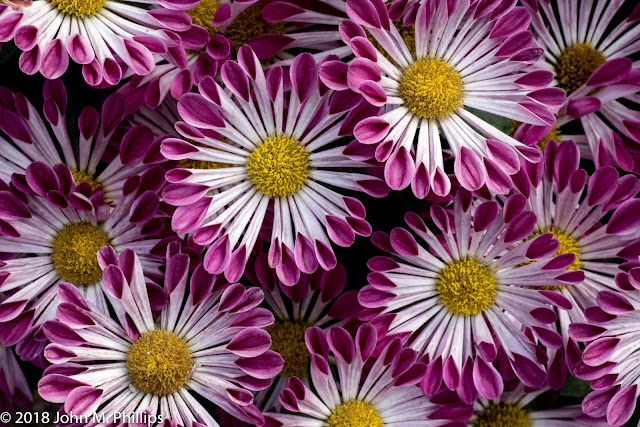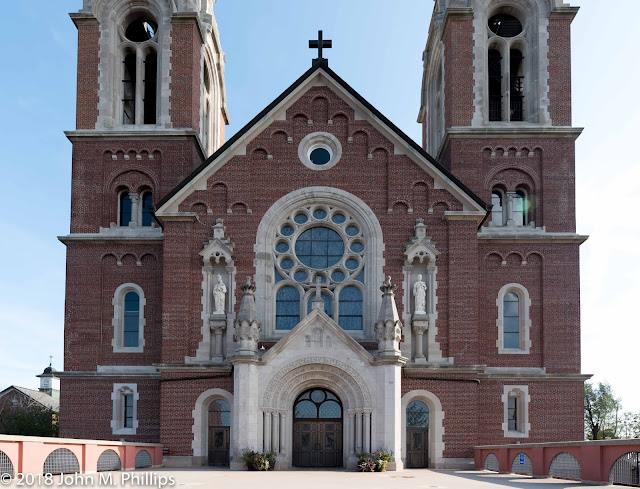The Mitchell Park Domes is Milwaukee's premier horticultural conservatory, and I have visited it many times, primarily to do macro photography. Admittedly, on my previous visit, several months ago, I found very little in the way of new opportunities. However, I decided to return this last weekend to see if there were any changes that might catch my interest. I did find a few new opportunities, and this is what I shot and kept.
First, an old scene of a bed of flowers, of which there are many in the conservatory's Show Dome.
Nice, but of course not new.
The following, also in the Show Dome, was one of several examples of a ball-shaped flower that I had not seen before. What I liked was not the overall flower but the texture that the petals created as a semi-abstract.
The image shot is probably 2" by 3", and the overall ball was probably 5-6" across. I actually softened up the petals a bit in post processing to give the overall image a smoother appearance. Just OK, I thought.
I found the following flower, probably 3-4" across, in the Desert Dome and my recollection is that there was just this one specimen that was in bloom.
I cropped the flower to show less than the entire bloom. I somehow felt that this gave the image more interest. The petals were more three-dimensional than appears in the photo, with the tips at least an inch closer to the camera than the flower's center. I focused on the center of the flower, which meant that the tips of the petals would be badly out of focus at a normal aperture, so I narrowed the aperture in this case to f/25. That brought the greenery in the background into play, and is part of the reason I cropped the shot down to emphasize the flower. I liked the flower particularly for its clean and simple elegance and rich orange color.
A new plant, also in the Desert Dome, I had not seen on previous visits was the following member of the cactus family. The plant was sausage-shaped and perhaps 2-1/2" in diameter by 6-7" long I had a difficult time trying to figure out how to capture the peculiar "whiskers" that the plant exhibited. Because the plant was upright and very close to the ground, I got lazy and decided to shoot it looking down from the top. I probably should have looked for other ways to shoot it, given its unusual appearance. Next time, perhaps.
Finally was a leafy plant in the Tropical Dome that I had shot a few years ago. This specimen was a much lighter green than previous times. This plant is also low-lying, so I had to position my camera less than a foot off the ground--not easy with a tripod.
The image included here, of a portion of one of the leaves, was perhaps2"x3". The leaf, which was the best example of those reasonably available to my camera, was pretty beat-up, but maybe that added to its "character." I did like the image as a semi-abstract.
John



























































